#King George II of Greece
Text

Rare photo of King Constantine I of Greece with his children and brother (?) (from left to right) Prince Christopher of Greece and Denmark (?), Prince George, Princess Helen, Prince Alexander of Greece and Denmark, early 1900s
Source: Princess Victoria of Wales’s private albums
#I’m not sure if the boy on the right is Christopher….#looks about right though…#king Constantine i#greek royal family#king george ii of greece#king alexander of greece#princess helen of greece and denmark#princess helen of greece#Helen queen mother of Romania#crown princess Helen of Romania#prince Christopher of Greece and Denmark
13 notes
·
View notes
Text
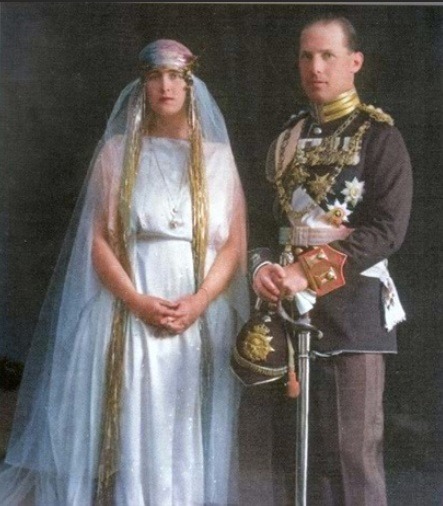
1 note
·
View note
Text
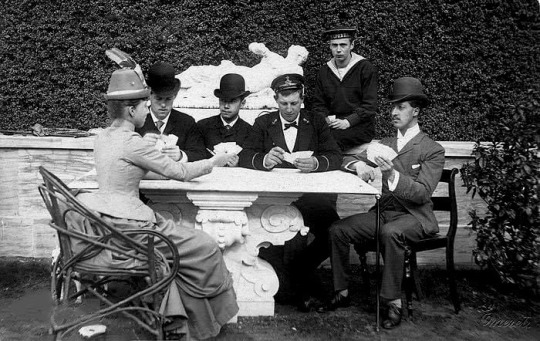
Cousins playing cards, late 1880's
Princess Alexandra of Greece and Denmark, Crown Prince Constantine of Greece and Denmark, Tsesarevich Nicholas, Prince George of Greece and Denmark, Grand Duke George Alexandrovich, Prince Albert Victor of Wales.
#alexandra georgievna#king constantine i#tsesarevich nicholas#George of Greece and Denmark#george alexandrovich#prince albert victor#1880s#danish royal family#nicholas ii#grand duke george#albert victor#alexandra of greece
45 notes
·
View notes
Text
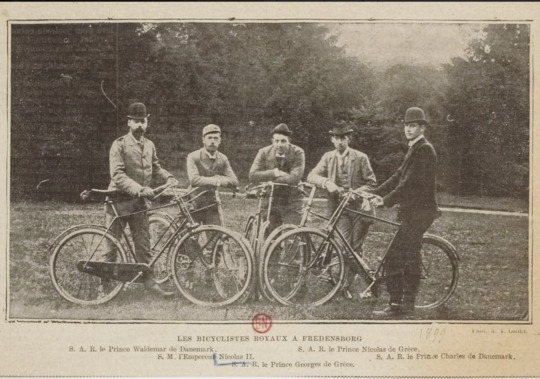
THE BICYCLE WAS ALL THE RAGE, SO THE ROYALS HAD TO GET INTO CYCLING
On the photo above, from left to right: Prince Valdemar of Denmark, Emperor Nicholas II, “Greek Georgie” (Prince George of Greece), “Greek Nicky” (Prince Nicholas of Greece) and Prince Christopher of Denmark. These guys really dressed up to go riding…neck tie, hat…
On the photo below, from left to right, Grand Duke Mikhail Alexandrovich…the jock of the group as usual, notice the handle of his bike; Cousin Victoria of Wales with an incredibly small waist, Queen Maud and her handsome and intelligent husband Hakoon VII.

#russian history#imperial russia#nicholas ii#vintage photography#prince nicholas of greece and denmark#prince george of greece#Grand Duke Mikhail Alexandrovich#Princess Victoria of Wales#Queen Maud of Norway#King Haakon VII of Norway#prince Charles of denmark
17 notes
·
View notes
Photo
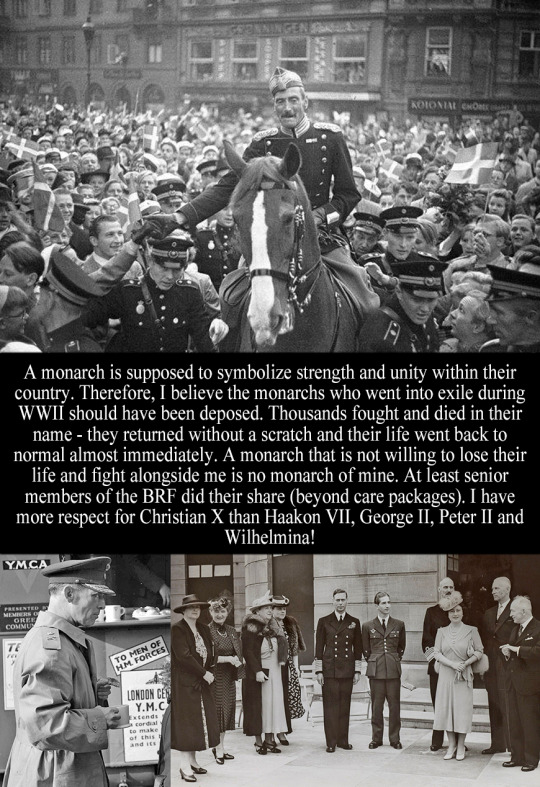
“A monarch is supposed to symbolize strength and unity within their country. Therefore, I believe the monarchs who went into exile during WWII should have been deposed. Thousands fought and died in their name - they returned without a scratch and their life went back to normal almost immediately. A monarch that is not willing to lose their life and fight alongside me is no monarch of mine. At least senior members of the BRF did their share (beyond care packages). I have more respect for Christian X than Haakon VII, George II, Peter II and Wilhelmina!” - Submitted by Anonymous
#King Christian X#Haakon VII#Peter II of Yugoslavia#queen wilhelmina#George II of Greece#british royal family#monarchy
19 notes
·
View notes
Text
A Royal Life by HRH Duke of Kent & Hugo Vickers #HouseofWindsor #BookReview #Audiobook
I finally got around to listening to the #Dukeofkent's memoir recently. A cousin to the late #QueenElizabethII, he has also led a life of service. Famed royal historian #HugoVickers helped put together this book. #houseofwindsor #ARoyalLife #bookreview
HRH The Duke of Kent has been at the heart of the British Royal Family throughout his life. As a working member of the Royal Family, he has supported his cousin, The Queen, representing her at home and abroad. His royal duties began when, in 1952, at the age of sixteen, he walked in the procession behind King George VI’s coffin, later paying homage to The Queen at her Coronation in 1953. Since…

View On WordPress
#A Royal Life#Duchess of Kent#Duke of Edinburgh#Duke of Kent#House of Windsor#Hugo Vickers#King George V#King George VI#Prince George#Prince Philip#Princess Marina#Princess Marina of Greece and Denmark#Queen Elizabeth II#Queen Mary
3 notes
·
View notes
Text
Some of the surviving clothes and personal belongings of Lord Byron (1788 - 1824)


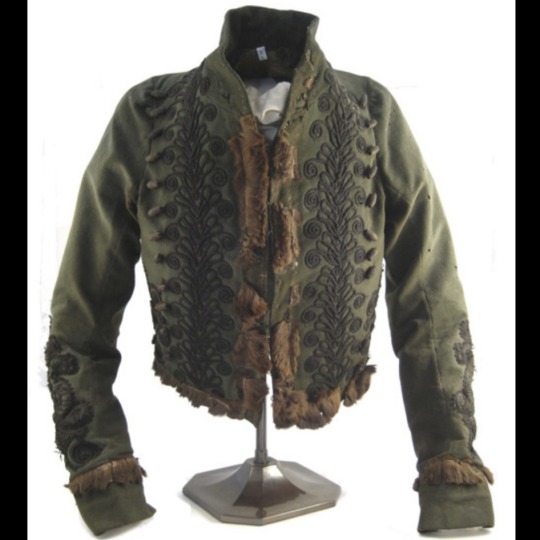
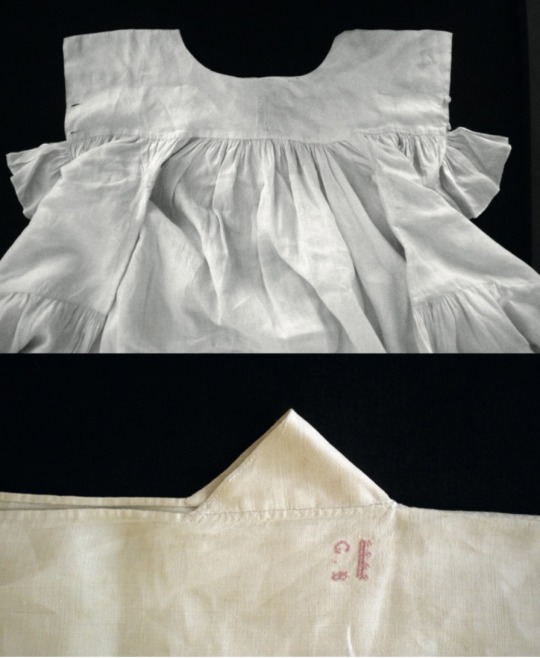
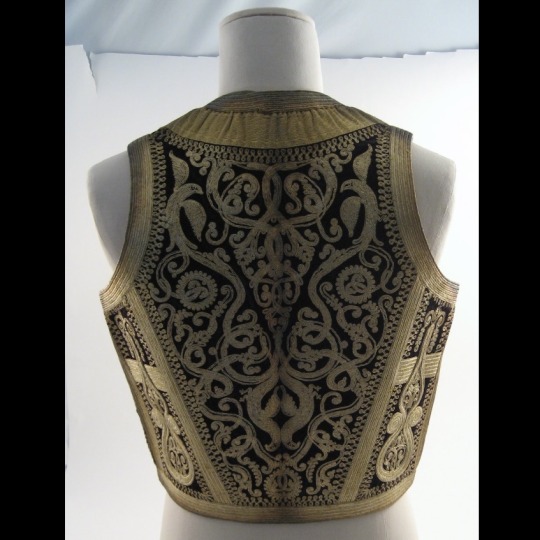

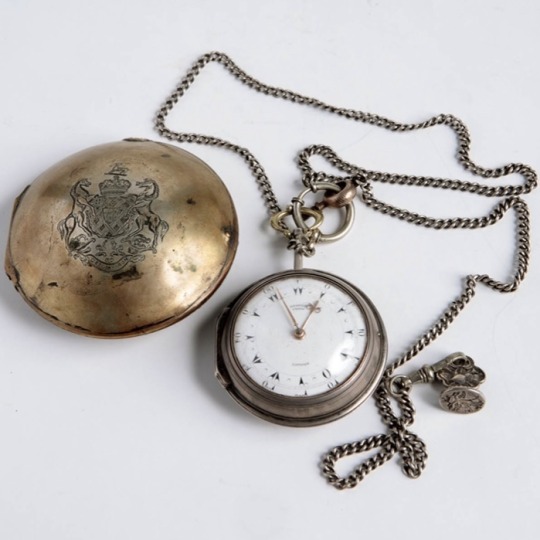

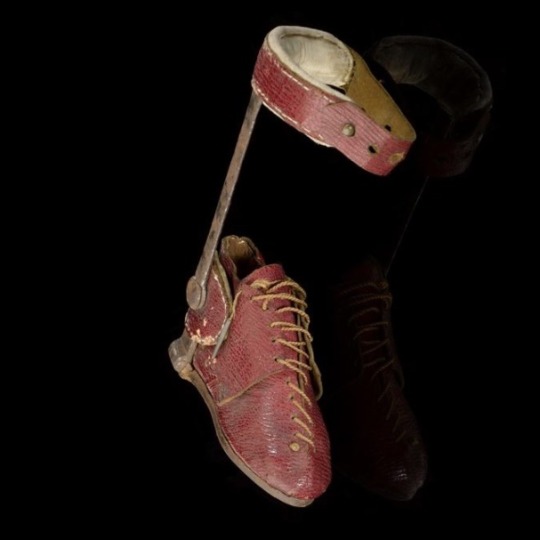
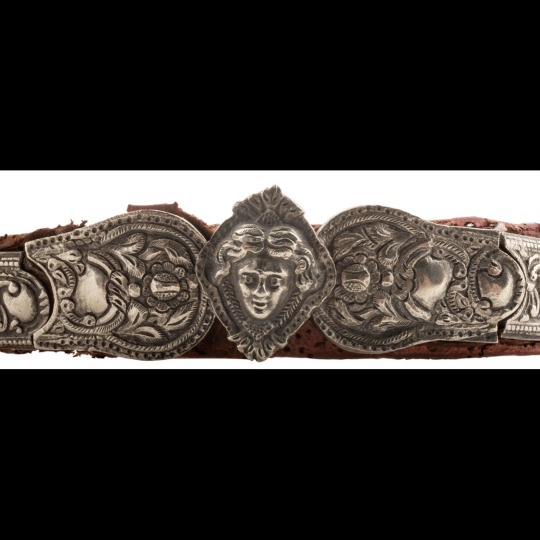
1) a favorite white waistcoat originally belonging to King George II (1683 - 1760) bearing their shared initials; Byron wore this on his wedding day
2) a red embroidered jacket from Albania
3) a green fur-lined jacket given to him by Edward Trelawny
4) a linen undershirt of his which Lady Byron kept after their separation
5) a gold embroidered vest from Albania
6) a ring, thought to be his engagement ring
7) a pocket-watch bearing the Byron family crest
8) pair of boxing gloves; pugilism was big in 1800s london & like many male aristocrats at the time, Byron took lessons at the academy of famous boxing champion John Jackson
9) a small infant’s orthopedic boot; one of the many unsuccessful attempts to treat the congenital deformity of his leg & lifelong limp
10) a 32in/83cm belt with the head of Nike/Victory worn in his last months in Greece during the Revolution; a popular symbol during the war.
#lord byron#history#fashion#historical fashion#regency era#regency era fashion#byron#british history#artefacts#museum artefacts#artifacts#relics#english history#literary history#old#19th century#imperial era#georgian era#1800s#alabanian#byronism#romantic era#romanticism
173 notes
·
View notes
Note
How physically active were actually "medieval" noble women? I know is a long period but I usually see people complaning about noble women in fantasy doing stuff such as hunting or riding horses. I have seen a couple of illustrations of fencing manuals with women in them too.
We, as a culture, especially in the US, have a very bad habit of using the British Regency/Victorian era as the gold standard for how women all over the world were treated throughout history. And the truth is, it ain’t that way. It never was, because women in this exact era used to duel each other in other parts of Europe and often did it topless.
Yes, this is real. We have records of it.
Was it all women, all the time? No. Was it often enough to mention? Yes.
There’s a really good article by Kameron Hurley, “Women Have Always Fought” that goes over the history of women warriors and the laziness of specular fiction in detail. This is a particularly great few paragraphs from the article that covers where our popular conception that women don’t fight comes from.
“Women have always fought,” he said. “Shaka Zulu had an all-female force of fighters. Women have been part of every resistance movement. Women dressed as men and went to war, went to sea, and participated actively in combat for as long as there have been people.”
I had no idea what to say to this. I had been nurtured in the U.S. school system on a steady diet of the Great Men theory of history. History was full of Great Men. I had to take separate Women’s History courses just to learn about what women were doing while all the men were killing each other. It turned out many of them were governing countries and figuring out rather effective methods of birth control that had sweeping ramifications on the makeup of particular states, especially Greece and Rome.
Half the world is full of women, but it’s rare to hear a narrative that doesn’t speak of women as the people who have things done to them instead of the people who do things. More often, women are talked about as a man’s daughter. A man’s wife.
Sounds familiar, doesn’t it?
Check out some of these real women below.
Empress Maude, the daughter of the English King, Henry I, was named her father’s heir after her brother died. While her cousin Stephen stole the throne after her father’s death, she raised an army and took the country into a civil war to take it back. They fought it out for the decade it took for her son to reach adulthood, and laid the groundwork for Henry II to become king. There’s a great novel by Sharon Kay Penman, When Christ and His Saints Slept which chronicles the civil war. If you’re interested in medieval history, I recommend reading it. Her daughter-in-law, Eleanor of Aquitaine, also led an interesting life. (It should be said, real history got to the denied female heir fights for her throne before George R.R. Martin.)
There’s great videos from Xiran Jay Zhao discussing the Chinese warrior queen Fu Hao of the Shang Dynasty and Wu Zetian, who became China’s first female emperor. (Yes, you read that right. Emperor.)
There is Khutulun, the Wrestler Princess and the great-great granddaughter of Gengis Khan, who is one source of our “defeat her in battle to marry her” tropes. She issued this challenge, “defeat her in wrestling, she’ll marry.” She scammed would be suitors out of 10,000 horses. Western male authors are so threatened by Khutulun, they’ve kept trying to rewrite her history by making her fall victim to the power of love. (No, seriously.)
There’s also Hojo Masako, the Buddhist nun who deposed her own son when he proved incompetent and ruled Japan as Shogun. Here’s her wiki entry too.
The Amazons of Greek Myth were real in that they were actual Scythian women who went to war. (As Scythian women did, just like their men.) They terrified and terrorized the Greeks so much, they became immortalized in their mythology. Don’t believe me? Here’s an article from National Geographic and this one from Live Science.
There’s stories like this all throughout history from big events to small ones. (You can find more over at Rejected Princesses if you’re interested.) There are female warriors, female generals, noblewomen who took command of their husbands’ forces, widows who took to the sea to get revenge on those who wronged them, women who rode with their husbands to battle, female assassins, female leaders of rebellions, etc. The women of the Japanese samurai class were trained to fight, and fight they did. Women warriors, queens, and politicians are all over mythology too. You’ll often see these women come out of the upper echelons of society because money creates options, but they are there. Many of those stories are lost to history, in some cases purposefully, and there was a long trend among archeologists that assumed because a person was buried with male grave goods, the body had to be male. We’re now finding out that isn’t true. There’s a significant portion of warrior corpses that have turned out to be female. Assassin’s Creed: Valhalla chose to post a notice about it in response to these exact criticisms you’re questioning.
Those people you see complaining online? They’re clinging to a version of history that doesn’t exist. More, we know it doesn’t, because popular culture is hungry to the point of desperate for aggressive, confident, and competent female characters. If they were truly a lie, they wouldn’t ring true for so many people.
The history we’re taught today largely downplays women’s achievements, contributions, and successes while uplifting those of men. It’s a fact. Go look at famous female figures anywhere, you’ll find the same story at play over and over. Historically, fantasy as a genre largely portrays a world that is, in fact, fantasy, but that fantasy has nothing to do with women doing things they’re not “supposed” to. There’s no clubhouse. There’s nothing unrealistic in imagining your female character is a kickass queen who defeats overconfident men in wrestling competitions and robs them of all their horses. It’s not unrealistic to come up with an ending that doesn’t conclude in tragedy, violent deaths, them “learning their place,” or even locked within the bonds of an unhappy marriage. (Shocker!) Some did, but the truth isn’t universal. It’s not even unrealistic to imagine they might have supportive male family members, love interests, and followers who happily (gasp) assist them in these endeavors. Maude, for reference, had bastard half-brothers who helped her instead of trying to take the throne for themselves.
History got here before fantasy authors. There’s nothing unrealistic about reality. Popular conceptions and common knowledge fed to us by the majority male dominated culture isn’t always the truth. Reality is, it’s the stories we see normalized across the media spectrum that are wrong. The ones that insist women are objects, who commodify their pain, and reframe their stories to ensure the focus remains on men. While this is changing, women are still often treated as the NPCs of male driven stories.
The people you hear complaining? They want storytelling traditions to stay that way, for the Great Man values countless narratives have reinforced to remain unchallenged. Funny as it sounds, they’re threatened by the very existence of narratives that countermand that centralized focus on men being superior, that there is a stratified gender hierarchy, and men taking their place as the sole, worshipful focus of a woman’s existence, much less these female characters being important in their own narratives. If these people weren’t threatened by female characters being people, they wouldn’t say anything. They’d just move on in apathy.
Reality is people are complicated. There’s room for all stripes in all colors and contexts. It’s no secret that history has suppressed and erased countless stories that don’t support the ruling narrative of the dominant culture. These same people forget there’s plenty of storytelling traditions that include women taking their place as warriors in cultures outside America. For all the sexism and misogyny, women fighting is not an alien concept, it’s not even foreign to other Western European traditions.
Believe what your own research is showing you, not what a bunch of idiots who can’t tell their ass from their elbow are whining about. They can’t handle someone who isn’t straight, male, and (most often) white being the central focus. Really, they can’t handle these characters as even a side focus. That’s their loss, it doesn’t have to be yours.
-Michi
This blog is supported through Patreon. Patrons get early access to new posts, and direct access to us through Discord. If you’d like to support us, please consider becoming a Patron.
4K notes
·
View notes
Text
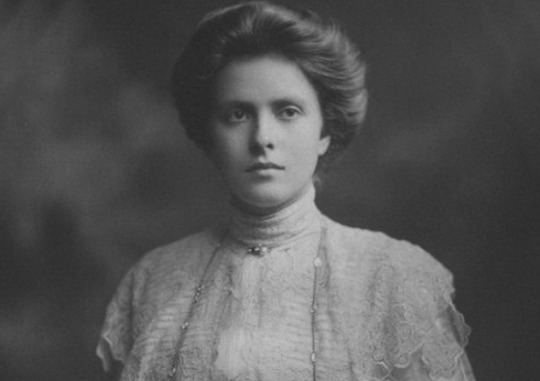
THURSDAY HERO: Princess Alice
Amazing story! Princess Alice was an unconventional royal who prioritized helping others over wealth and privilege. She devoted her life to good deeds and spiritual growth, and was notable among European royalty for taking Jews into her home during the Holocaust.
Princess Alice stood out for another reason: she was deaf from birth.
Born in 1885 at Windsor Castle, Alice was the great-granddaughter of Queen Victoria. She learned to lip read at a young age, and could speak several languages. Alice was widely regarded as the most beautiful princess in Europe.
At age 17, Alice fell in love with dashing Prince Andrew of Greece and they were married in 1903. Alice and Andrew had four daughters and a son. Their son Philip would later be married to Queen Elizabeth II. Alice communicated with her children mainly in sign language.
Political turmoil in Greece forced the royal family into exile. They settled in a sleepy suburb of Paris, where Alice threw herself into charitable work helping Greek refugees. Her husband left her for a life of gambling and debauchery in Monte Carlo.
Relying on the charity of wealthy relatives, Alice found strength in her Greek Orthodox faith. She became increasingly religious, and believed that she was receiving divine messages and had healing powers. She yearned to share her faith and mystical experiences with others, but instead was dismissed as mentally unhinged.
Alice had a nervous breakdown in 1930. She was committed against her will to a mental institution in Switzerland, with a dubious diagnosis of schizophrenia. Alice did not even get a chance to say goodbye to her children. Her youngest, 9 year old Philip, returned from a picnic to find his mother gone.
Alice tried desperately to leave the asylum, but was kept prisoner in Switzerland for 2 1/2 years. During that time, her beloved son Philip was sent to live with relatives, and her four daughters married German princes. Alice was not allowed to attend any of their weddings.
Finally, in 1932, Alice was released. She became a wanderer, traveling through Europe by herself, staying with relatives or at bed & breakfast inns. In 1935, Alice returned to Greece, where she lived alone in a modest two bedroom apartment and worked with the poor.
The Germans occupied Athens in April 1941. Alice devoted herself to relieving the tremendous suffering in her country. She worked for the Red Cross, organizing soup kitchens and creating shelters for orphaned children. Alice also started a nursing service to provide health care to the poorest Athenians.
In 1943, the Germans started deporting the Jews of Athens to concentration camps. Alice hid a Jewish widow, Rachel Cohen, and her children in her own apartment for over a year. Rachel’s late husband, Haimaki Cohen, was an advisor to King George I of Greece, and Alice considered it her solemn duty to save the remaining Cohen family.
Alice lived yards from Gestapo headquarters. When the Germans became suspicious of her and started asking questions, she used her deafness as an excuse not to answer them. Alice kept the Cohen family safe until Greece was liberated in 1944.
After the war, Alice founded her own religious order, the Christian Sisterhood of Martha and Mary, and became a nun. She built a convent and orphanage in a poverty-stricken part of Athens. Alice dressed in a nun’s habit consisting of a drab gray robe, white wimple, cord and rosary beads – but still enjoyed smoking and playing cards.
In 1967, after a Greek military coup, Alice finally returned to Great Britain. She lived at Buckingham Palace with her son Philip and daughter-in-law, Queen Elizabeth II.
Alice died in 1969. She owned no possessions, having given everything to the poor. Before she died, Alice expressed a desire to be buried at the Convent of Saint Mary Magdalene on the Mount of Olives in Jerusalem, but instead was laid to rest in the Royal Crypt in Windsor Castle.
In 1988, almost 20 years after she died, Alice’s dying wish was finally granted. Her remains were sent to Jerusalem, where she was buried on the Mount of Olives.
In 1994, Alice was honored by the Holocaust Memorial in Jerusalem (Yad Vashem) as Righteous Among The Nations. Her son Prince Philip said of his mother’s wartime heroism, “I suspect that it never occurred to her that her action was in any way special. She was a person with a deep religious faith, and she would have considered it to be a perfectly natural human reaction to fellow beings in distress.”
Video
139 notes
·
View notes
Text


British Royal Family - The Queen attend the Thanksgiving Service for King Constantine of the Hellenes at St George's Chapel in Windsor, England. Constantine II, Head of the Royal House of Greece, reigned as the last King of the Hellenes from 6 March 1964 to 1 June 1973, and died in Athens at the age of 82. (Photo by Chris Jackson) | February 27, 2024
#royaltyedit#theroyalsandi#queen camilla#queen camilla of the united kingdom#british royal family#my edit
92 notes
·
View notes
Text
✨ 15 days of Princess Anne ✨
August is Princess Anne’s birth month and her 73rd birthday is on the 15th so until then we will look at her fascinating life, one photo for every year!
The fifties
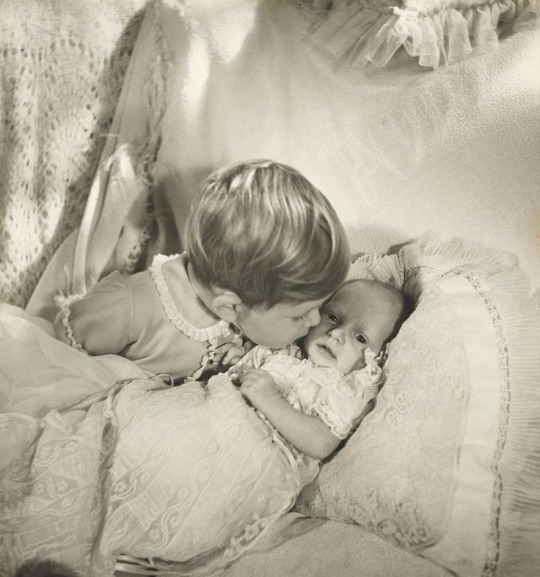
1950 18 month old Prince Charles kissing his newborn baby sister Anne’s cheek, taken by Cecil Beaton, September 1950.
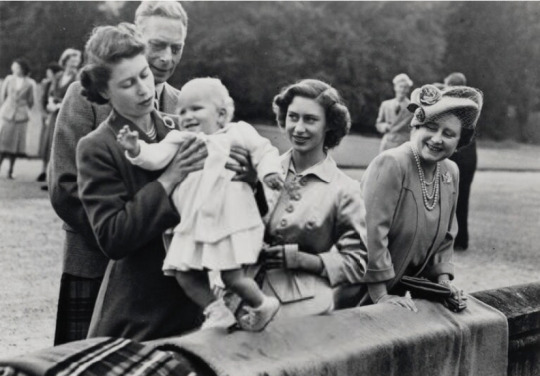
1951 One year old Princess Anne with her mother, Princess Elizabeth, Aunt Princess Margaret, Grandfather King George VI and Grandmother Queen Elizabeth. Taken at Balmoral Castle, August 1951.
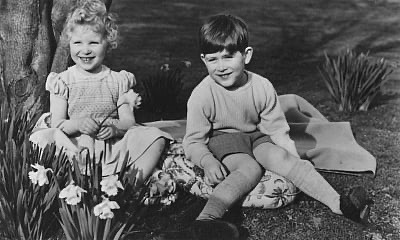
1952 Prince Charles and Princess Anne sat in daffodils in the gardens of Balmoral Castle, 28th September 1952.

1953 Princess Anne and her big brother Prince Charles playing peek-a-boo during the portrait session at their mother, Queen Elizabeth IIs coronation, in the throne room of Buckingham Palace, 2nd June 1953.
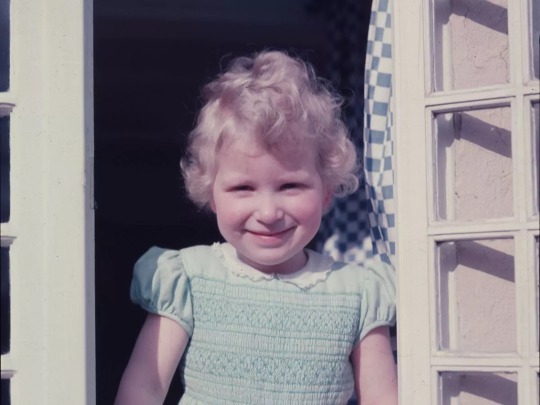
1954 Princess Anne taken through a window of the Little Welsh House at Royal Lodge, Windsor, 18th August 1954.
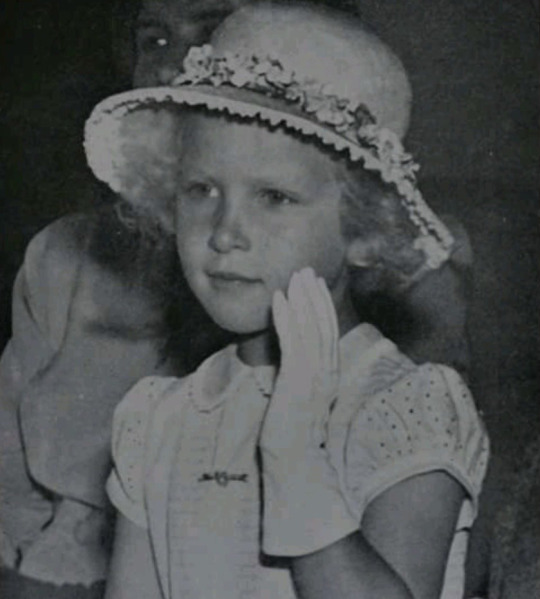
1955 Princess Anne waving to the crowds gathered outside Crathie Church, Balmoral on the eve of her 5th birthday, 14 August 1955.

1956 Princess Anne with her paternal grandmother Princess Alice (Princess Andrew of Greece), aboard the Royal Yacht Britannia, Southampton, 9th August 1956.
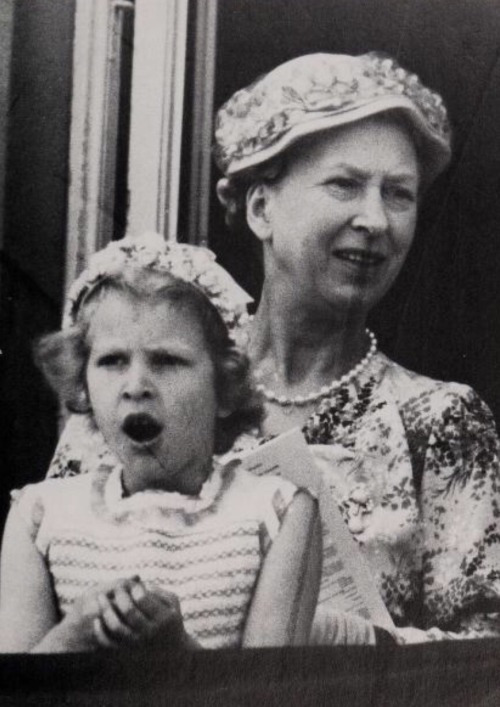
1957 Princess Anne with her great-aunt Mary, Princess Royal, watching the Trooping of the Colour from the balcony of Buckingham Palace on 13th June 1957.
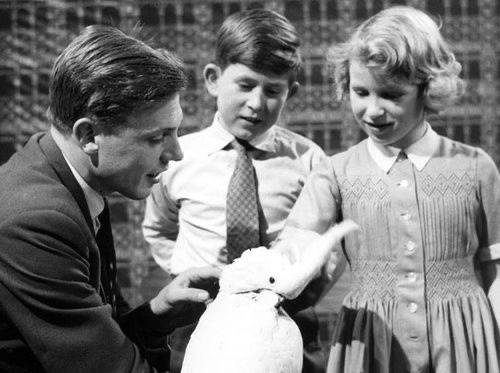
1958 Prince Charles and Princess Anne making friends with David Attenborough's 3 year old cockatoo, Cocky at the BBC television studios at Lime Grove, 29th April 1958.
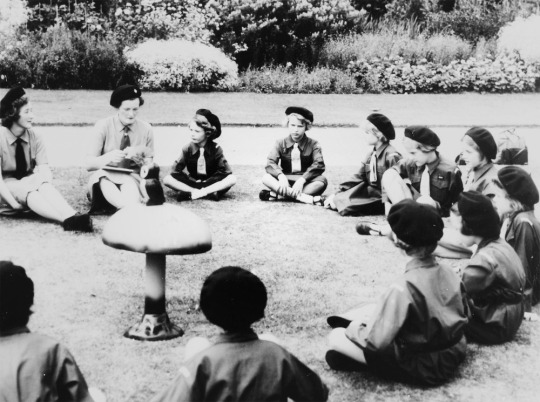
1959 Princess Anne, Brown Owl, Tawny Owl and the rest of the 1st Buckingham Palace brownie pack sitting in a circle with a toadstool and brown owl in the middle in the gardens of Buckingham Palace, 1st December 1959.
#15 days of anne#these photos are so adorable#the cutest little cherub#princess anne#princess royal#fetus anne
90 notes
·
View notes
Text
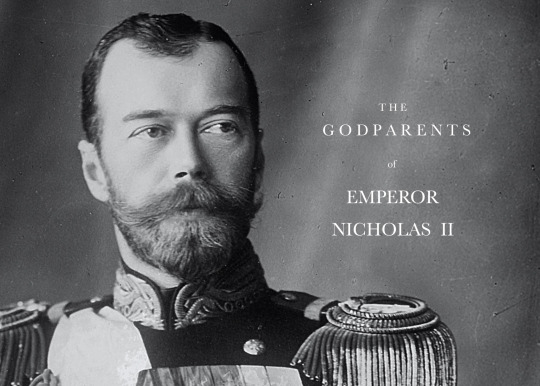


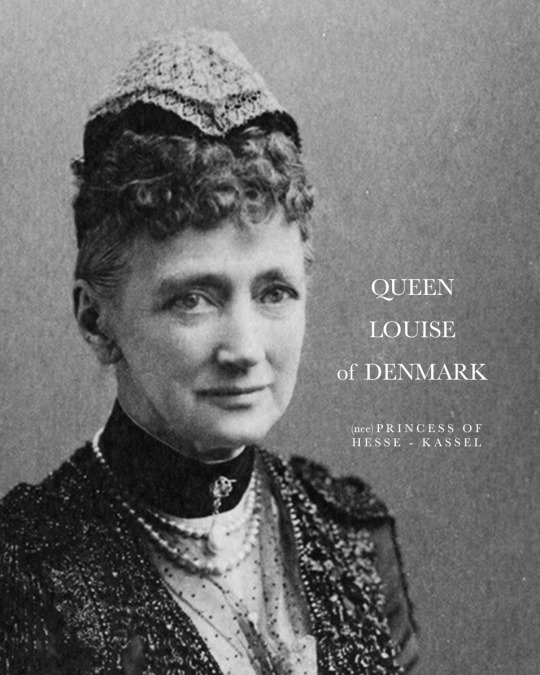

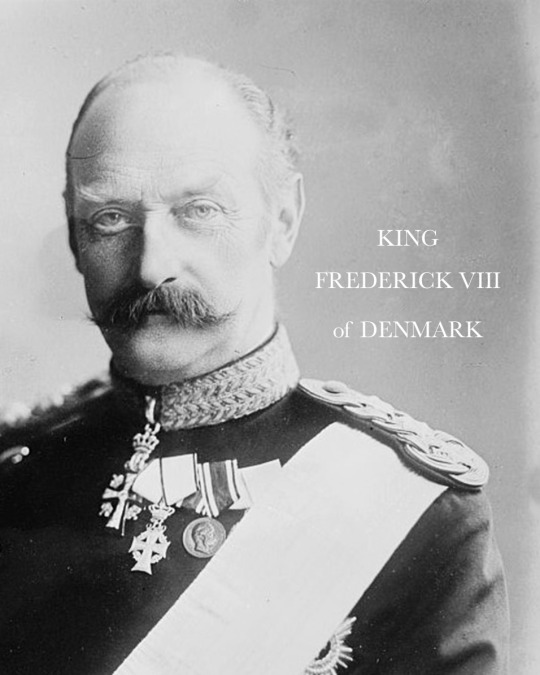
GODPARENTS OF NICHOLAS II
Born during his grandfather's reign on 18 May (New Style) 1868 at the Alexander Palace, Tsarkoe Selo in Saint Petersburg. He was the eldest son of Alexander III and his wife Maria Feodorovna (then, the Tsarevich and Tsarina of Russia). He was christened on 1 June at the Chapel of the Resurrection of the Catherine Palace at Tsarskoe Selo, by the confessor of the imperial family, protopresbyter Vasily Borisovich Bazhanov. His godparents were:
ALEXANDER II, EMPEROR OF RUSSIA - his paternal grandfather, the Russian Emperor stood as one of the godparents. He became the Emperor of All Russia in 1855. Alexander’s most significant reform as emperor was the emancipation of Russia’s serfs in 1861, for which he is known as Alexander the Liberator. He was assassinated in 1881 when the young Nicholas was only 12 years-old, to which he became the heir apparent upon his death.
PRINCESS MARIE OF HESSE AND BY RHINE, EMPRESS MARIA ALEXANDROVNA OF RUSSIA - his paternal grandmother, the consort of Emperor Alexander II, was another of his godparents. Known for her intellect, she was one of the founders of the Russian Red Cross Society. However, she suffered from tuberculosis from 1863 and spent long stays in southern Europe to avoid harsh winters. Although she and her husband were unofficially separated sometime after the death of their eldest son, Maria was treated with respect and love by her surviving family. Maria passed away from illness when the young Nicholas was still a child.
PRINCESS LOUISE OF HESSE-KASSEL, QUEEN CONSORT OF DENMARK - his maternal grandmother was listed as one of his godparents. Louise became the Queen consort of Denmark upon her husband's - King Christian IX - accession in 1863, just few years before her grandson Nicholas' birth. She, herself, was a niece of another King of Denmark (Christian VIII). The great dynastic success of Louise's six children was to a great extent a result of Louise's own ambitions - through them, she was a grandmother of not only the future Tsar of Russia (Nicholas II), but also that of King George V of the United Kingdom; King Constantine I of Greece; King Christian X of Denmark, and King Harken VII of Norway.
GRAND DUCHESS ELENA PAVLOVNA OF RUSSIA - his great-great-aunt, the wife of the late Grand Duke Michael Pavlovich, was one of his godparents. Born as Princess Charlotte of Württemberg, she became a close friend of his grandmother the Empress Maria Alexandrovna, and was known as an intellectual. She was also considered the most exceptional woman in the imperial family since Catherine the Great.
KING FREDERICK VIII OF DENMARK - then, the Crown Prince, his maternal uncle stood as one of his godparents. During the long reign of his father, he was largely excluded from influence and political power. Upon his father's death in 1906, he acceded to the throne at the advanced age of 62. In many ways, Frederick VIII was a liberal monarch who was much more favorable to the new parliamentary system introduced in 1901 than his father had been, being reform-minded and democratically inclined.
Source
84 notes
·
View notes
Text

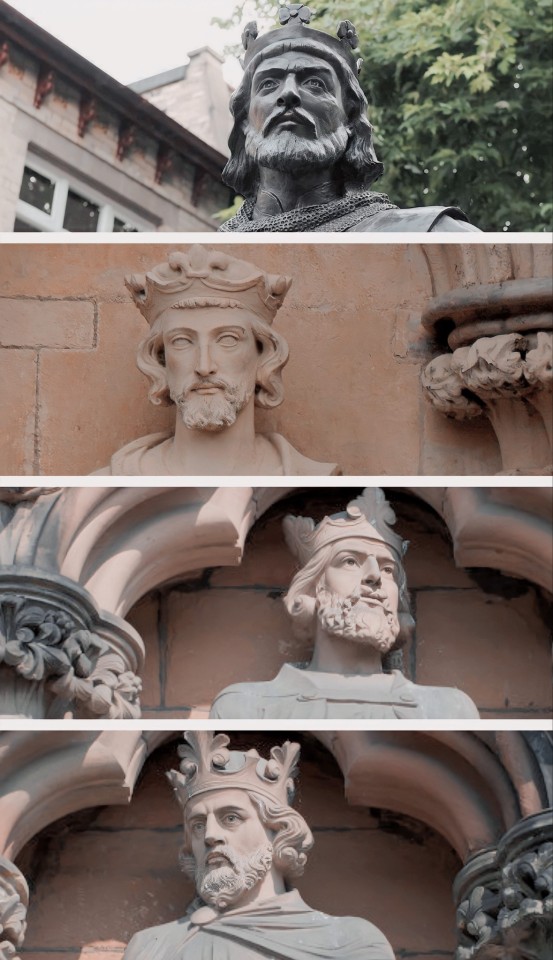


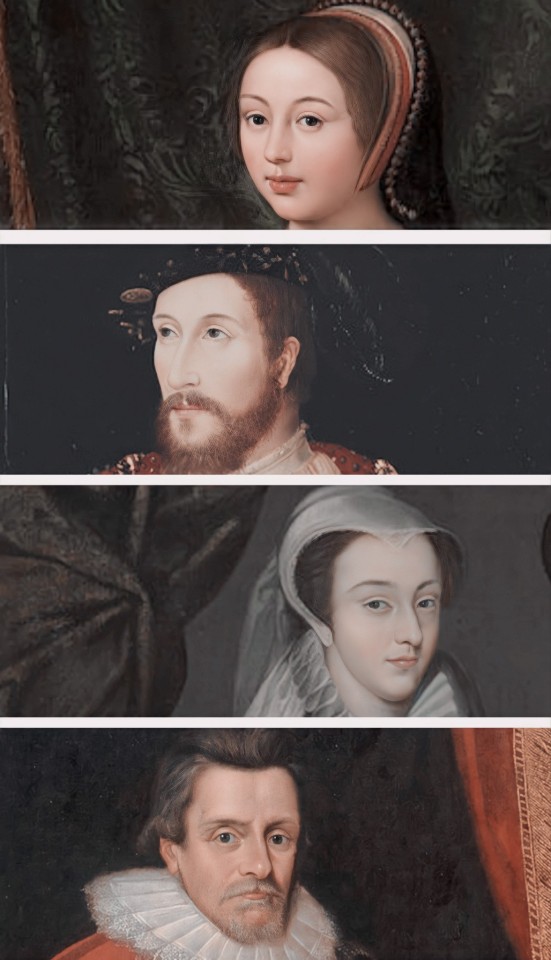



⋆ William, The Conqueror to Prince Louis of Wales ⋆
⤜ William I is Prince Louis of Wales' 25th Great-Grandfather via his paternal line through Prince Philip
William I of England
Henry I of England
Empress Matilda
Henry II of England
John of England
Henry III of England
Edward I of England
Edward II of England
Edward III of England
Lionel of Antwerp, Ist Duke of Clarence
Philippa Plantagenet, Vth Countess of Ulster
Roger Mortimer, IVth Earl of March
Anne Mortimer
Richard Plantagenet, IIIrd Duke of York
Edward IV of England
Elizabeth of York
Margaret Tudor, Queen of Scotland
James V, King of Scotland
Mary Stewart, Queen of Scotland
James I of England
Elizabeth Stuart, Queen of Bohemia
Sophia, Electress of Hanover
George I of Great Britain
George II of Great Britain
Frederick, Prince of Wales
George III of the United Kingdom
Prince Edward Augustus, Duke of Kent and Strathearn
Victoria of the United Kingdom
Princess Alice of the United Kingdom, Grand Duchess of Hesse
Princess Victoria of Hesse and by Rhine
Princess Alice of Battenberg
Prince Philip of Greece and Denmark
King Charles III of the United Kingdom
William, The Prince of Wales
Prince Louis of Wales
#royal line from william i#the british royal line#british royal family#british royals#royalty#royals#brf#british royalty#history#historical royals#house of york#house of tudor#house of plantagenet#royal#medieval ages#william the conqueror#king charles iii#prince william#the prince of wales#prince of wales#queen victoria#mary queen of scots#prince philip#duke of edinburgh#house of stuart#house of stewart#house of windsor#elizabeth of york#prince louis of wales#prince louis
126 notes
·
View notes
Text

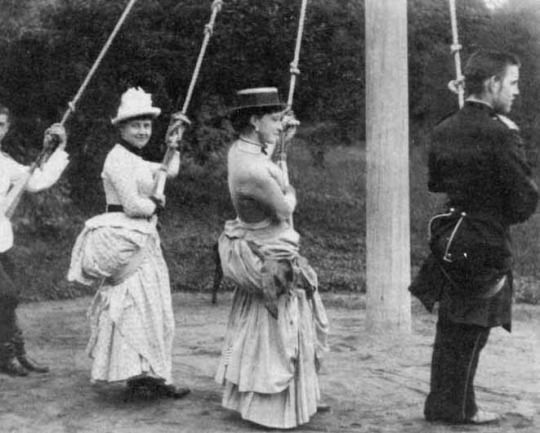
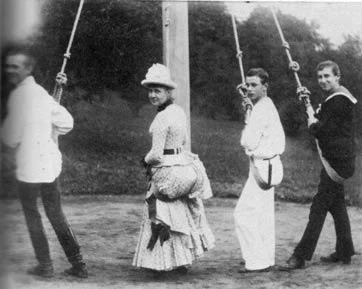
Relatives 1887
Tsesarevich Nicholas, Elizabeth feodorovna, Alexander mikhailovich,Prince Constantine, Nicholas of Greece, Maria Goergovna,Sergei Mikhailovich, George Alexandrovich.
#tsesarevich nicholas#elizabeth feodorovna#george alexandrovich#prince constantine#prince nicholas of greece and denmark#Maria georgovna#Alexander mikhailovich#sergei mikhailovich#1880s#romanovs#nicholas ii#king constantine i#elizabeth of hesse#grand duke george
14 notes
·
View notes
Photo
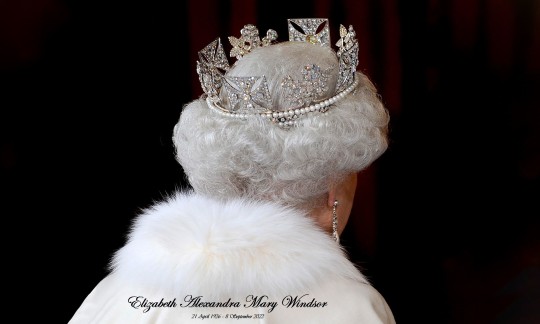
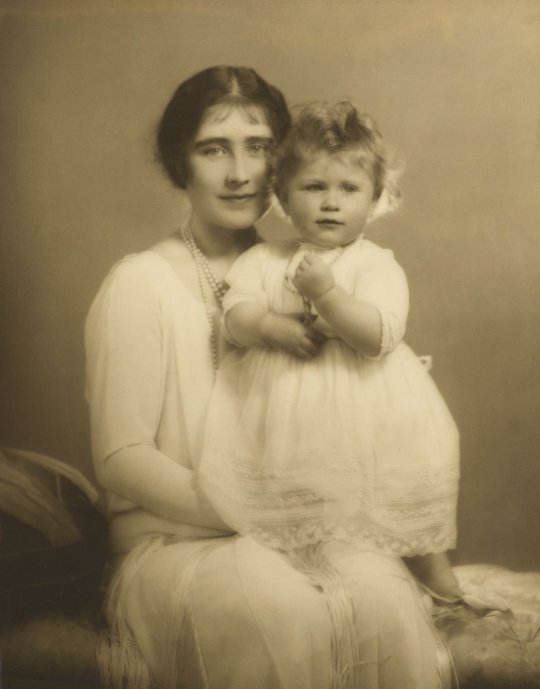


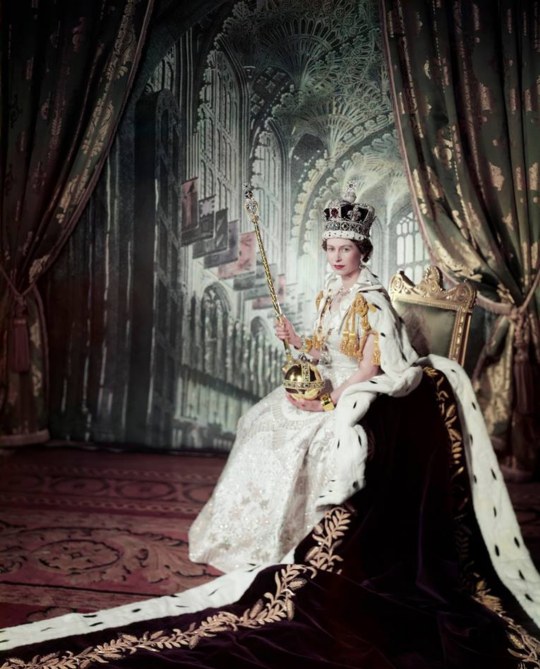
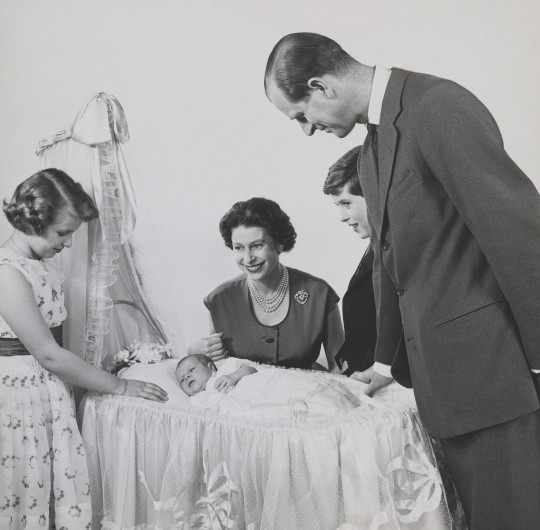


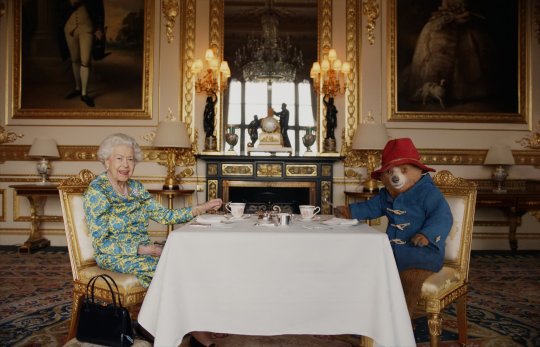

Queen Elizabeth II has died
Queen Elizabeth II, the United Kingdom’ s longest-serving monarch, has died at Balmoral aged 96, after reigning for 70 years.
Elizabeth II (Elizabeth Alexandra Mary; 21 April 1926 – 8 September 2022) was Queen of the United Kingdom and 14 other Commonwealth realms from 6 February 1952 until her death on 8 September 2022.
Her reign of 70 years and 214 days was the longest of any British monarch and the second longest recorded of any monarch of a sovereign country.
Elizabeth was born in Mayfair, London, as the first child of the Duke and Duchess of York (later King George VI and Queen Elizabeth). Her father acceded to the throne in 1936 upon the abdication of his brother, King Edward VIII, making Elizabeth the heir presumptive.
She was educated privately at home and began to undertake public duties during the Second World War, serving in the Auxiliary Territorial Service. In November 1947, she married Philip Mountbatten, a former prince of Greece and Denmark, and their marriage lasted 73 years until his death in April 2021. They had four children together: Charles III; Anne, Princess Royal; Prince Andrew, Duke of York; and Prince Edward, Earl of Wessex.
When her father died in February 1952, Elizabeth—then 25 years old—became queen regnant of seven independent Commonwealth countries: the United Kingdom, Canada, Australia, New Zealand, South Africa, Pakistan, and Ceylon (known today as Sri Lanka), as well as Head of the Commonwealth. Elizabeth reigned as a constitutional monarch through major political changes such as the Troubles in Northern Ireland, devolution in the United Kingdom, the decolonization of Africa, and the United Kingdom's accession to the European Communities and withdrawal from the European Union.
The number of her realms varied over time as territories have gained independence and some realms have become republics. Her many historic visits and meetings include state visits to China in 1986, Russia in 1994, the Republic of Ireland in 2011, and visits to or from five popes.
Significant events include Elizabeth's coronation in 1953 and the celebrations of her Silver, Golden, Diamond, and Platinum Jubilees in 1977, 2002, 2012, and 2022, respectively.
Elizabeth was the longest-lived and longest-reigning British monarch, the oldest and longest-serving incumbent head of state, and the second-longest verifiable reigning sovereign monarch in world history, only behind Louis XIV of France.
She faced occasional republican sentiment and media criticism of her family, particularly after the breakdowns of her children's marriages, her annus horribilis in 1992, and the death of her former daughter-in-law Diana, Princess of Wales, in 1997.
However, support for the monarchy in the United Kingdom remained consistently high, as did her personal popularity. Elizabeth died on 8 September 2022 at Balmoral Castle, Aberdeenshire.
“The Queen is dead, Long live King Charles III”
The Duchess of York with Princess Elizabeth, 30 June 1927 by Marcus Adams (The Royal Collection Trust),
Princess Elizabeth in uniform (1942) by Cecil Beaton (The Royal Collection Trust),
Princess Elizabeth and The Duke of Edinburgh on their wedding day, 20th November 1947 by Sterling Henry Nahum ‘Baron’ (The Royal Collection Trust),
Queen Elizabeth II poses on her Coronation Day on June 2, 1953, in London (Photography by Cecil Beaton),
Queen Elizabeth II with Prince Philip, Duke of Edinburgh and family - 16 Mar 1960 by Cecil Beaton (From the Collection of Queen Elizabeth The Queen Mother),
Queen Elizabeth II and her son, the Prince of Wales, out riding at Windsor Castle I May 18, 1961 (PA),
The Royal coat of arms of the United Kingdom used outside of Scotland,
Queen Elizabeth II Platinum Jubilee 2022 - Platinum Party At The Palace. The Queen Elizabeth II and Paddington Bear having cream tea at Buckingham Palace (BBC Platinum Party at the Palace),
Portrait of Queen Elizabeth II released by The Royal Windsor Horse Show on April 20, 2022 to mark the occasion of her 96th birthday.
#rip#queen elizabeth ii#elizabeth II#queen elizabeth#monarchy#united kingdom#royal#platinium junilee#windsor#markus adams#cecil beaton#theroyalcollectiontrust#paddington#bbc#balmoral#diana#king charles III#princess anne#prince andrew#prince edward#liveunique#history#britsh history#british royality
345 notes
·
View notes
Text

Romanov relatives: The family of Prince Andrew of Greece
Prince Andrew, fourth son of Olga Konstantinovna, is seated in front with his nephew, the future King George II of the Hellenes. Behind them are Andrew's younger brother Christopher with Theodora, Andrew's wife Alice, and their daughter Margarita. Andrew and Christopher were also first cousins of Nicholas II through the Danish line.
Alice too had strong connections to the Romanov family; her mother Victoria was the elder sister of Alexandra Feodorovna and Elizaveta Feodorovna, making Alix and Ella here aunts, and OTMAA her first cousins.
#romanov relatives#greek royal family#alice of battenberg#andrew of greece#christopher of greece#george ii of the hellenes#margarita of greece#theodora of greece
72 notes
·
View notes